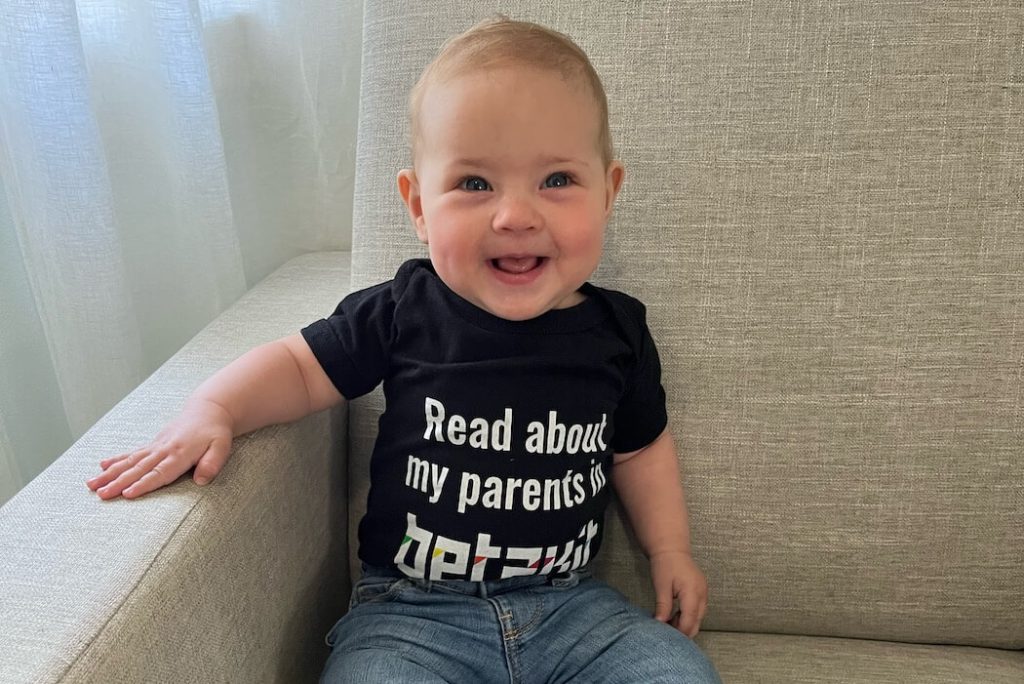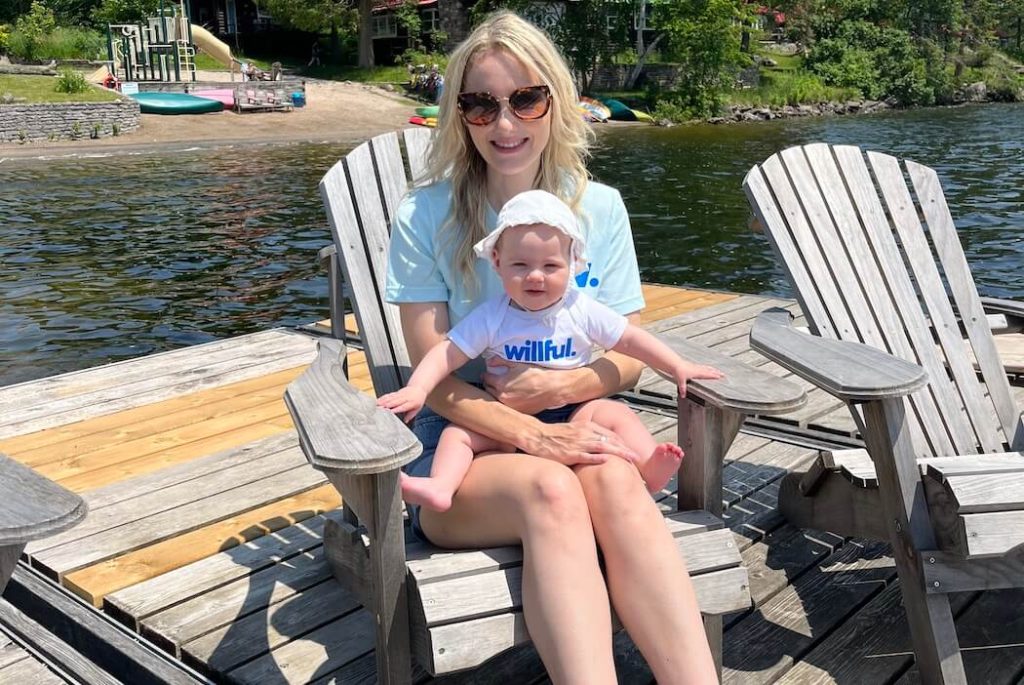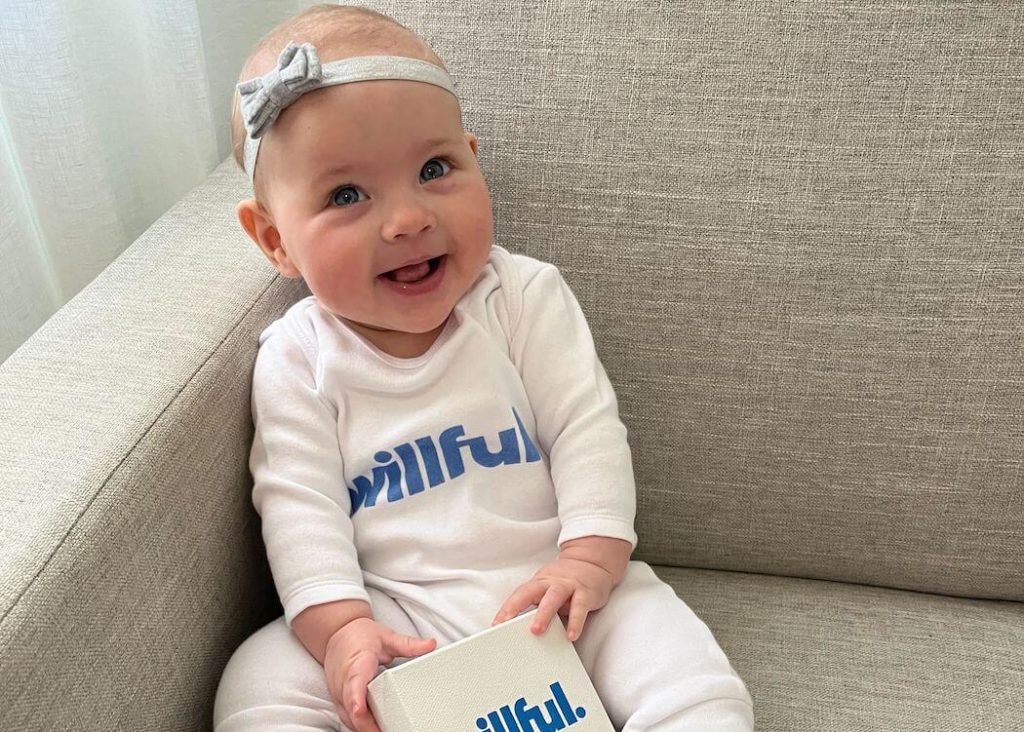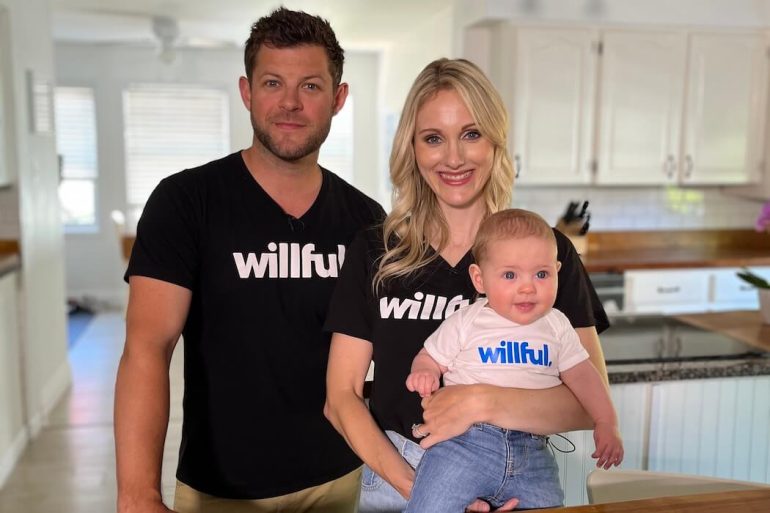During my four-month maternity leave, my company, online will platform Willful, had its most successful period in our five-year history. I attribute that success to the preparation that went into my maternity leave, and of course to an incredible team.
Since returning to work, I’ve been approached by many expecting parents looking for advice on how to prepare for parental leave, but also on how to stay in the loop while on leave, and how to approach the return to work. This article attempts to provide a tactical timeline as you prepare for and return from your leave (note that it includes a lot of tips for the person carrying a child, but is applicable to anyone going on leave).
1-2 years prior: Decide who will take on your role while you’re away
By the time I was pregnant in early 2021, I had been planning for my maternity leave for over two years. In 2020, we prioritized hiring a COO, Julia Staffen, who would be able to act as interim CEO when I went on leave – she filled operational gaps in the business, but also shadowed my role.

As a company that focuses on emergency planning, this also made sense outside of just a parental leave – if I had to step out of the business for any reason, there was someone who could easily step into my role. If it’s not feasible for you to hire a full-time person, you can split your responsibilities amongst other team members who can shadow you leading up to your leave, or decide which activities you can pause while you’re away.
7 months prior: Make key decisions about your parental leave
Before your first trimester ends and you start to share the news with people, you’ll want to make some key decisions about your parental leave. These include:
How long do I plan to take off (minimum and maximum)?
Do I want to work right up until my due date or would I rather have a couple of weeks off prior to my due date to get organized?
How will I pay myself while I’m gone (i.e, full salary, top-up, just government benefits), and am I eligible for government EI benefits?
Who will be covering my responsibilities (and will it be one person or several people)?
Will I want to log out of email/Slack completely, or do I want to keep a pulse on those channels?
Do I need to hire any team members or any vendors to fill gaps while I’m away?
How involved do I want to be in the business while I’m away (if at all)?
What key projects need to be completed prior to going on leave?
When will I be comfortable sharing the news with company stakeholders?
Who will provide childcare after I return to work?
3-6 months prior: Communicate to key stakeholders
Your inclination may be to blurt out the happy news to everyone in your circle, but it’s important to phase communication to key stakeholders and to be strategic about the messaging. The key here is to provide confidence that the company will thrive while you’re away.
Here are some tips on sharing with key stakeholders:
Build in flexibility:
I anticipated only taking three months off, but as the three-month deadline approached I cried when I even thought about returning to work – I just wasn’t emotionally ready (thanks hormones!). By four months, I was excited to return and back to my old self – but if I had communicated a firm return date I wouldn’t have had the option to give myself more time without feeling like I was letting people down.
Phase the timing:
I told our leadership team shortly after, and shared the concrete plan for continuity. They were thrilled for us, but I’ve spoken to other founders whose leadership teams didn’t have positive reactions, and that’s largely driven out of fear for how it will change their role and the company – so leading with a solid plan can help assuage that.
Frankly, if anyone is anything but happy for you, I would question their culture fit at the company. I shared with our board of directors at our next meeting, and they were happy for us as well (especially because they knew Julia well and were extremely confident in her leadership). We told the wider team (about 20 people) shortly after, and let them know we would address the plan and any questions in our next company-wide town hall meeting.
Loop in folks outside your inner circle as needed:
Frankly, I felt the opposite: if an investor didn’t want to put money into Willful because I’m pregnant, I didn’t want them on my cap table (the same approach Joanna Griffiths from Knix took when raising a round while nine months pregnant with twins).
But I also didn’t bring it up in conversation if it didn’t come up naturally. You don’t have an obligation to tell anyone about your pregnancy, but at the same time, business relationships are about trust. I felt I owed it to potential investors to tell them, and thankfully no one had an issue.
3-4 months prior: Build your parental leave plan
We use the Entrepreneur Operating System (EOS) at Willful to structure our goal-setting and daily operations, and I am a very Type A organized person – so our COO Julia wasn’t surprised that I compiled an extremely in-depth Notion maternity leave guide to document key processes, contacts, and plans for when I was away.

Regardless of where you build this plan, I highly recommend setting aside a few hours each week starting when you’re four to five- months pregnant to document the knowledge in your head that no one else knows, and to outline the rules of engagement for your leave.
My guide included the following:
Communication preferences and involvement while away:
I knew I wanted to attend our quarterly EOS planning sessions, our board meetings, and to be at our holiday party and the viewing party for our Dragons’ Den episode. I also knew I wanted to speak to Julia regularly to stay in the loop on high-level developments.
My plan set out an ideal cadence for touchpoints, and outlined clear boundaries (I would not monitor Slack or email; Julia would be the line of communication to me about anything company-related).
When to contact you (and when to use their judgement):
CEO responsibilities overview:
The goal was that she could take over any of my responsibilities without having a million questions (though I let her know I was there if she did have questions).
Other project delegation:
Key contacts:
To-do list:
I added to this guide slowly over the course of a few months, and shared it with Julia two months prior to my leave so she could review and ask questions. This was also a helpful exercise from a business continuity standpoint – I felt way better knowing all the things I manage had been documented somewhere.
1-2 months prior: Start the transition
My due date was November 12, and I planned to work right up to my due date. About six weeks before my due date I started slowly preparing for the transition in the day-to-day – the goal is to have everything covered off, from calendar invites to out-of-office notifications to project handoffs.
For me this process included:
-
Introducing the interim CEO to key stakeholders (vendors, partners, investors) so they were familiar with her.
Sharing a high-level version of the concrete plan with the wider team (estimated date you will go on leave; rules of engagement while away; who is taking over key projects, etc.).
Informing finance team of any changes to salary, and applying for maternity leave benefits.
Transitioning calendar invites I owned to Julia, and clearing my calendar for the three months after my due date (and clearing any events/presentations for two weeks prior to due date – babies come early, as I discovered!).
Engaging our virtual assistant, (Amanda Perriccioli from GTA Virtual Assistants), to monitor/triage my email inbox and LinkedIn messages while I was away, and preparing instructions on how to manage different types of inquiries and triage them to the appropriate team member (this was one of the best decisions I made – I came back to inbox zero! I highly, highly recommend having someone manage your inbox while you’re away).
Holding briefing meetings with team members to transition projects. My suggestion is to do this at least three to four weeks prior to your due date – I went into labour 10 days early and had a transition meeting schedule for the day of her birth – hand things off early).
Drafting an out-of-office notice that could be turned on at the appropriate time – this notified people that the inbox was being monitored and triaged, and directed people to team leads based on their inquiry.
Week of: Flip the switch
Babies come early, so plan to have everything transitioned two to-three weeks in advance so if baby comes early you’re not scrambling. Inform your replacement immediately when you go into labour, and set your out of office notification. I had to share a photo of our beautiful daughter Emmy with the Willful team in Slack before I logged out.
Postpartum: Lead the way on communications
The first month postpartum is a blur of feedings, changing diapers, hormones, and family time. While you might intend to have regular meetings with your team, you will likely want to have the space to just be with your new family without calendar commitments.

I started weekly meetings with Julia after about six weeks, and it was a great way to stay in the loop. You, of course, don’t have to do this, but it worked for me. We also kept in touch on my return date – I knew after three months it wasn’t enough time, and she was great about extending that to four months, and managing communications about my return with the team.
3-4 weeks prior to your return to work: Start the transition back
I knew I didn’t want to return cold turkey, so Julia and I started getting me up to speed about three weeks prior to my official return date.
As you prepare for your return, this may include things like:
Finalizing return logistics:
Briefing meetings:
Adjusting daily schedule and calendar:
Auditing responsibilities:
Stop, start, continue analysis:
A few additional tips as you prepare to go on leave
Give yourself the grace to disconnect and spend time with your family.
Prepare to be surprised by postpartum you.
I returned to work in March 2022 when my daughter was five months old, and I was so ready to come back. Looking back, I’m so glad I spent four months with her at home while still staying in the loop on Willful developments. It was tough to disconnect from the company, but it was the right thing to do – both to allow Julia to thrive in the interim CEO role, and to spend time with my new family.
I’m so grateful to have had a team, primarily Julia, who kept things moving while I was away, and I’m thankful that I put the energy into preparing as thoroughly as I did to ensure a smooth transition.
If you’re gearing up for your own leave, I wish you the best with preparing. They say if you want something done, give it to a busy person – and I’ve never been happier, and more productive, since becoming a parent.


